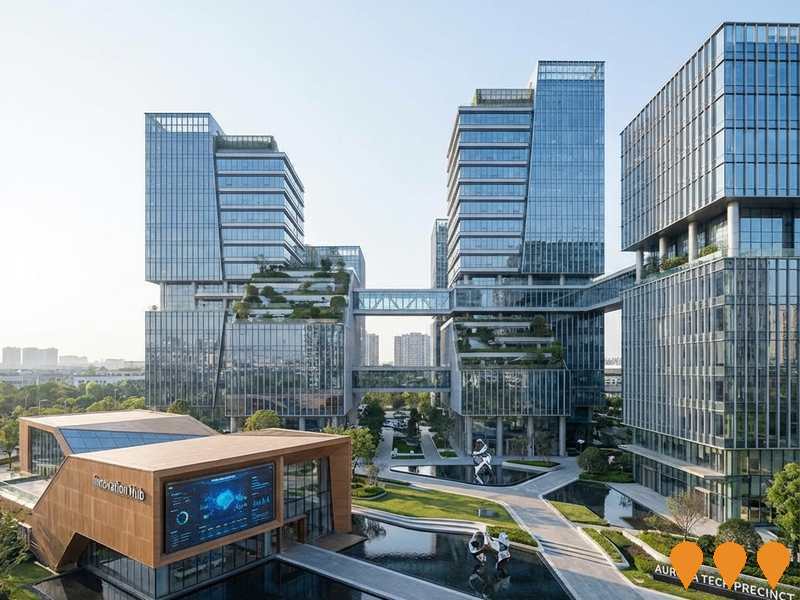Chart Color Schemes
est. as @ -- *
ABS ERP | -- people | --
2021 Census | -- people
Sales Activity
Curious about local property values? Filter the chart to assess the volume and appreciation (including resales) trends and regional comparisons, or scroll to the map below view this information at an individual property level.
Find a Recent Sale
Sales Detail
Population
Broadmeadows lies within the top quartile of areas nationally for population growth performance according to AreaSearch analysis of recent, and medium to long-term trends
Broadmeadows' population is approximately 15,273 as of Aug 2025. This figure reflects an increase of 1,414 people since the 2021 Census, which reported a population of 13,859. The growth was inferred from ABS's estimated resident population of 14,901 in June 2024 and additional validated new addresses since the Census date. This results in a population density ratio of 1,729 persons per square kilometer, higher than the average across national locations assessed by AreaSearch. Broadmeadows' growth rate of 10.2% since the 2021 census exceeded both the national average (8.6%) and state averages, positioning it as a growth leader in the region. Overseas migration contributed approximately 76.9% of overall population gains during recent periods.
AreaSearch is using ABS/Geoscience Australia projections for each SA2 area released in 2024 with a base year of 2022. For areas not covered by this data, they utilize VIC State Government's Regional/LGA projections released in 2023 and adjust employing weighted aggregation methods from LGA to SA2 levels. Growth rates by age group are applied across all areas for years 2032 to 2041. Future demographic trends predict exceptional growth for Broadmeadows, with an expected increase of 8,934 persons by 2041 based on the latest population numbers, representing a total gain of 55.3% over the 17-year period.
Frequently Asked Questions - Population
Development
AreaSearch assessment of residential approval activity sees Broadmeadows among the top 30% of areas assessed nationwide
Broadmeadows averaged approximately 156 new dwelling approvals annually over the past five financial years, totalling 781 homes. As of FY26, 27 approvals have been recorded. The average number of people moving to the area per year for each dwelling built between FY21 and FY25 is zero. This suggests that new supply is meeting or exceeding demand, providing ample buyer choice and capacity for population growth beyond current forecasts.
The average construction cost value of new properties is $508,000. In FY26, there have been $76.5 million in commercial approvals, indicating robust local business investment. Compared to Greater Melbourne, Broadmeadows records 14.0% less building activity per person but ranks among the 88th percentile of areas assessed nationally. New development consists of 20.0% detached houses and 80.0% attached dwellings, reflecting a trend towards denser development that appeals to downsizers, investors, and entry-level buyers. This represents a significant change from the current housing mix, which is 70.0% houses.
Broadmeadows has approximately 92 people per dwelling approval, indicating growth area characteristics. Future projections show Broadmeadows adding 8,447 residents by 2041. Development is keeping pace with projected growth, though buyers may face increasing competition as the population expands.
Frequently Asked Questions - Development
Infrastructure
Broadmeadows has very high levels of nearby infrastructure activity, ranking in the top 20% nationally
Changes to local infrastructure significantly influence an area's performance. AreaSearch has identified 38 projects that may impact the area. Notable projects include Broadfield Logistics Estate Phase 1, Parkview Broadmeadows, Banksia Gardens Social Housing Development, and Hume Central Redevelopment. The following list details those likely most relevant.
Professional plan users can use the search below to filter and access additional projects.
INFRASTRUCTURE SEARCH
 Denotes AI-based impression for illustrative purposes only, not to be taken as definitive under any circumstances. Please follow links and conduct other investigations from the project's source for actual imagery. Developers and project owners wishing us to use original imagery please Contact Us and we will do so.
Denotes AI-based impression for illustrative purposes only, not to be taken as definitive under any circumstances. Please follow links and conduct other investigations from the project's source for actual imagery. Developers and project owners wishing us to use original imagery please Contact Us and we will do so.
Frequently Asked Questions - Infrastructure
Suburban Rail Loop North - Broadmeadows Station
New underground transport super hub station on the Suburban Rail Loop North (Cheltenham to Box Hill to Melbourne Airport). Broadmeadows Station will integrate metropolitan Suburban Rail Loop services with existing V/Line regional services and the Craigieburn line, creating a major northern Melbourne interchange. Expected to serve approximately 8500 regional passengers daily by the 2050s, significantly improving connectivity across the Hume corridor and reducing travel times to key employment and education precincts.

Assembly Broadmeadows
Redevelopment of the former Ford Broadmeadows manufacturing site into a $600 million+ next-generation industrial and logistics precinct. The project is delivering over 305,000 sqm of gross leasable area including advanced manufacturing, warehousing, logistics facilities, office space and supporting retail amenity. Stages 1 and 2 are complete and fully leased, with Stage 3 under construction as of late 2025.
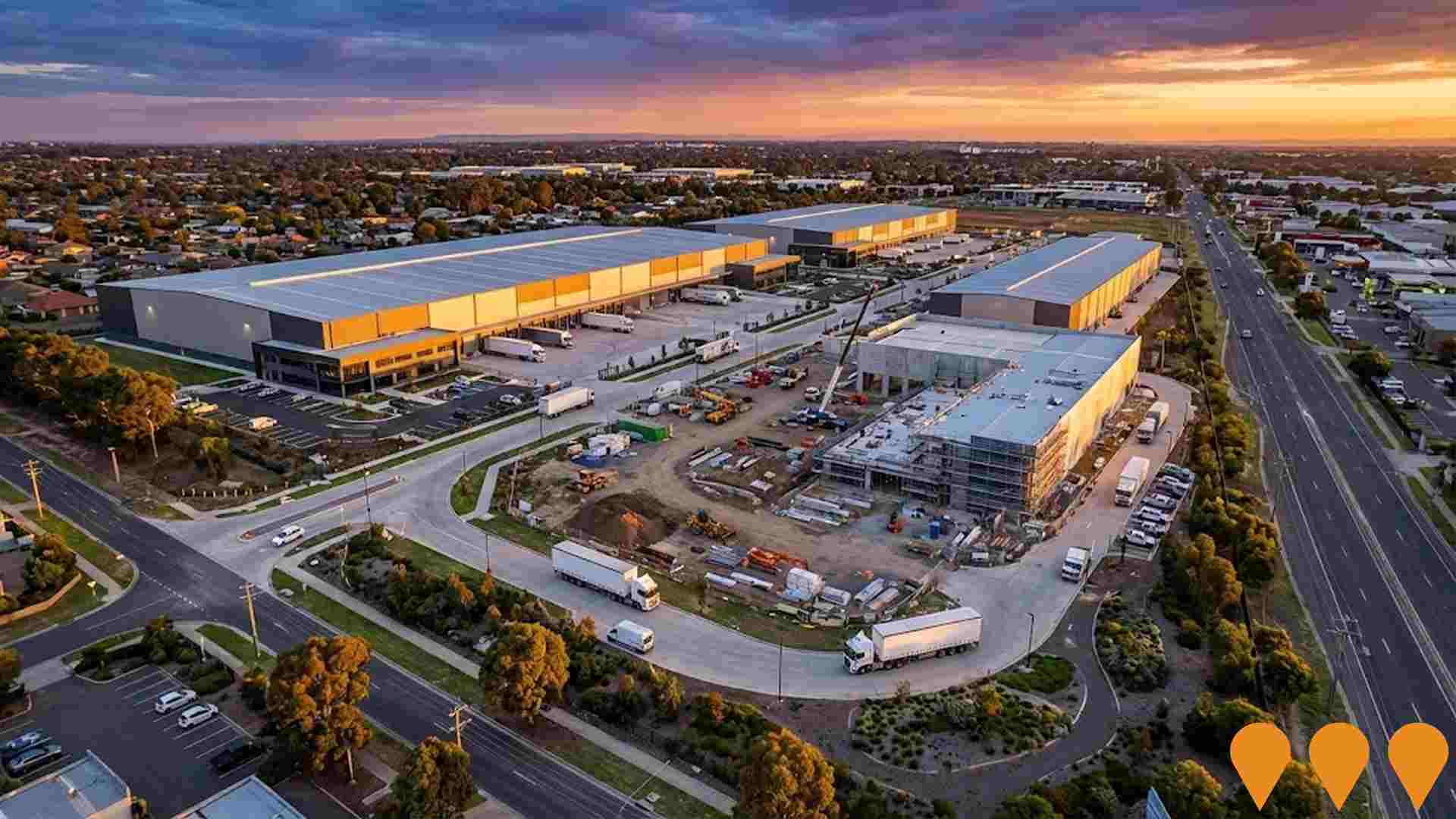
Hume Central - Broadmeadows Central Activities Area
Major urban renewal of the Broadmeadows Central Activities Area focused on the town hall precinct, creating a vibrant mixed-use town centre with new civic spaces, commercial opportunities, community facilities, education and health services, and improved connectivity. Guided by the adopted Broadmeadows Central Activities Area Framework Plan (2023) and supported by Victorian Government Suburban Revitalisation funding and federal investment through the Broadmeadows Revitalisation Board.
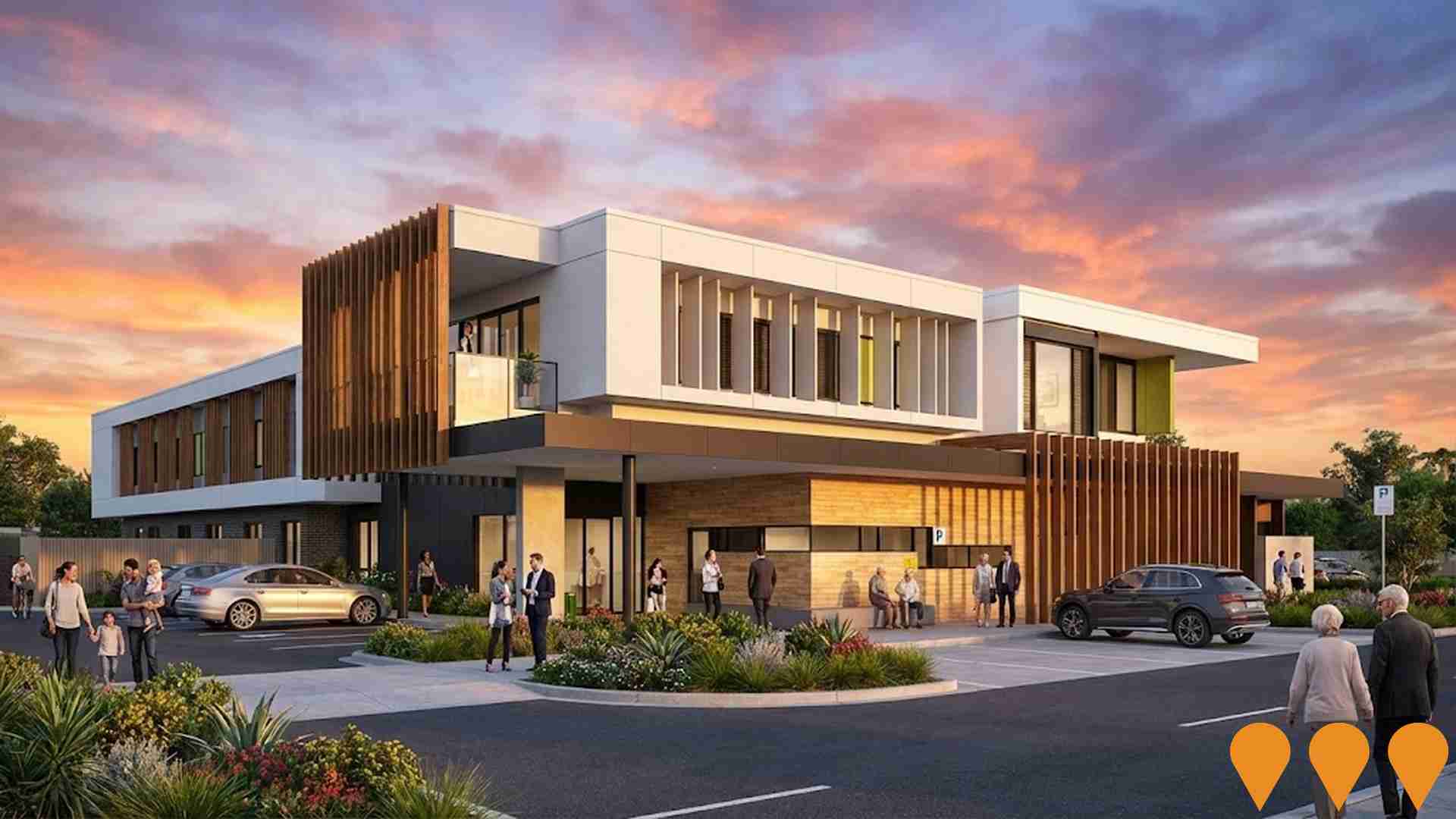
Broadmeadows Activity Centre Plan
The Broadmeadows Activity Centre Plan is a finalised strategy by the Department of Transport and Planning to guide development in the Broadmeadows activity centre over the next 10 to 30 years. It aims to unlock at least 3,000 new homes by 2051, promote housing diversity, employment, services, and public spaces, while ensuring sustainable growth and improved connectivity.

Broadmeadows Central
Broadmeadows Central is a single-level regional shopping centre located 19 km north-west of the Melbourne CBD. Anchored by Kmart, Coles, Woolworths, ALDI, and HOYTS Cinemas, it features over 115 specialty stores, family-friendly amenities (including a Quiet Room and sensory room), approximately 55,631 sqm GLA, and attracts around 8 million visitors annually. Co-owned by Vicinity Centres and Nikos Property Group (50/50 joint venture since mid-2023). Originally opened as 'Meadow Fair' in 1974 with ongoing upgrades.
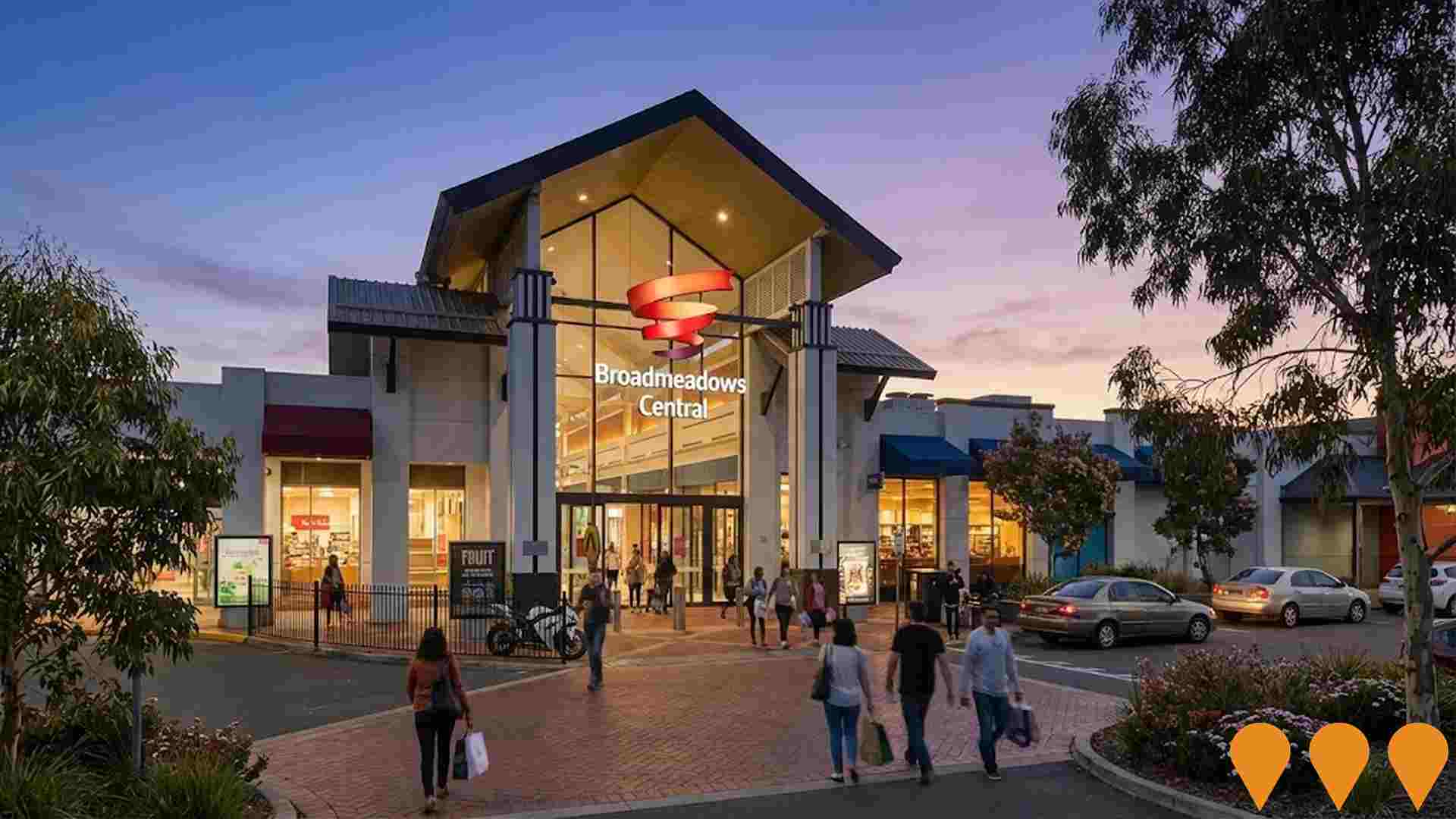
Hume Central Redevelopment
Council-led renewal to transform the Broadmeadows town centre into a mixed-use precinct with a new town square, improved civic spaces, a study hub, car park, potential hotel and mixed-use building, and upgrades to public realm and infrastructure to support jobs, learning and community life.

Northmeadows Strategic Site
The Northmeadows Strategic Site (formerly Meadowlink Strategic Priority Area) is a 60-hectare brownfield urban renewal precinct in Broadmeadows. It is transitioning from industrial/manufacturing uses into a mixed-use 20-minute neighbourhood with diverse housing (potential for ~3,750 dwellings), protected and intensified employment land, new community facilities, open spaces, improved transport links, and local jobs. Originally led by the Victorian Planning Authority (VPA), the project has transitioned to Hume City Council for ongoing strategic planning and implementation.
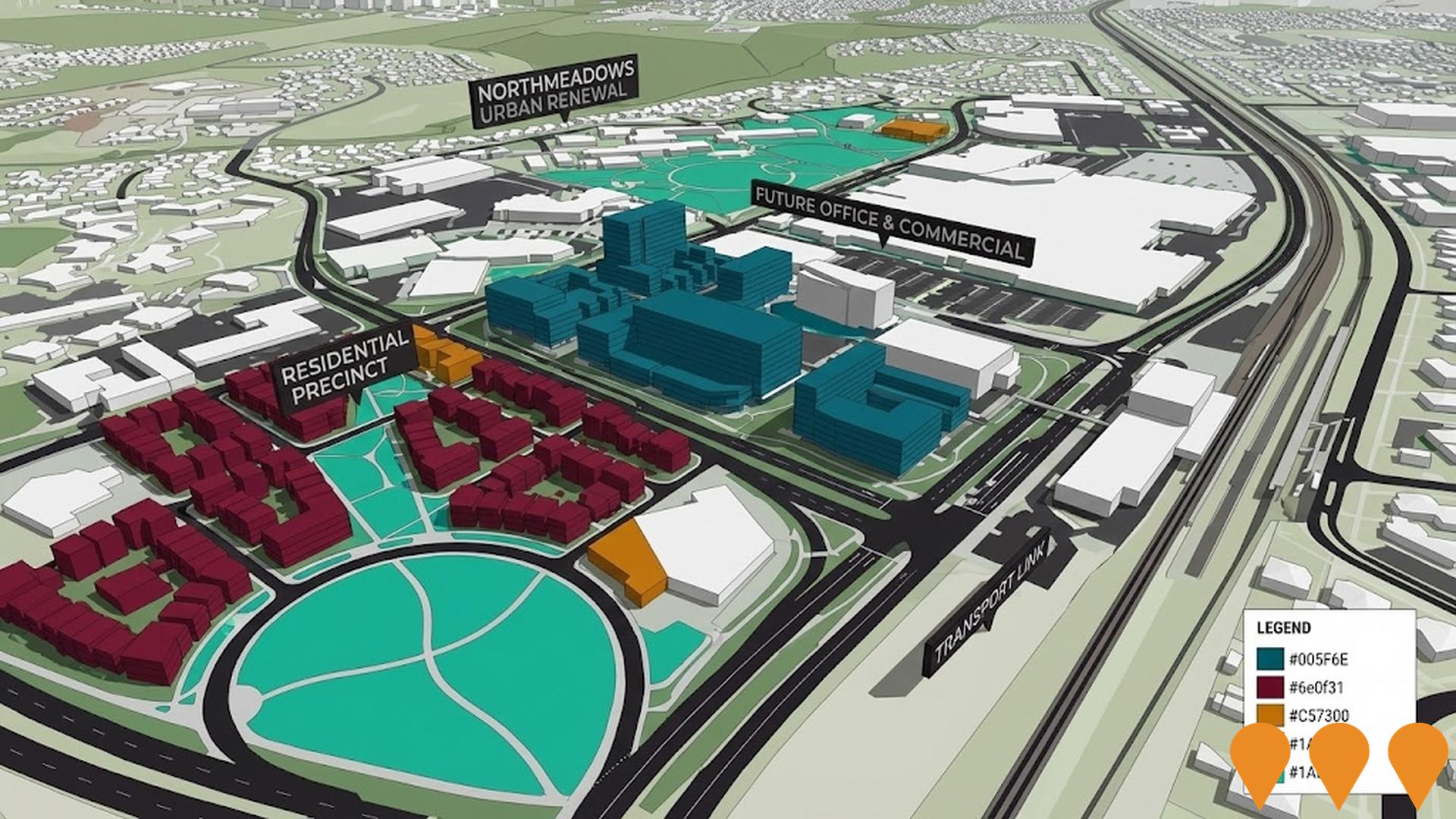
Hume Global Learning Centre Refurbishment
Comprehensive refurbishment of the ground floor of the Hume Global Learning Centre to create a new Council Chamber for 21 Councillors with public gallery for 80 people, community lounge and study areas, bookable meeting rooms, and a new cafe with commercial kitchen. The project enhances community engagement and provides modern facilities for civic participation and community gatherings.
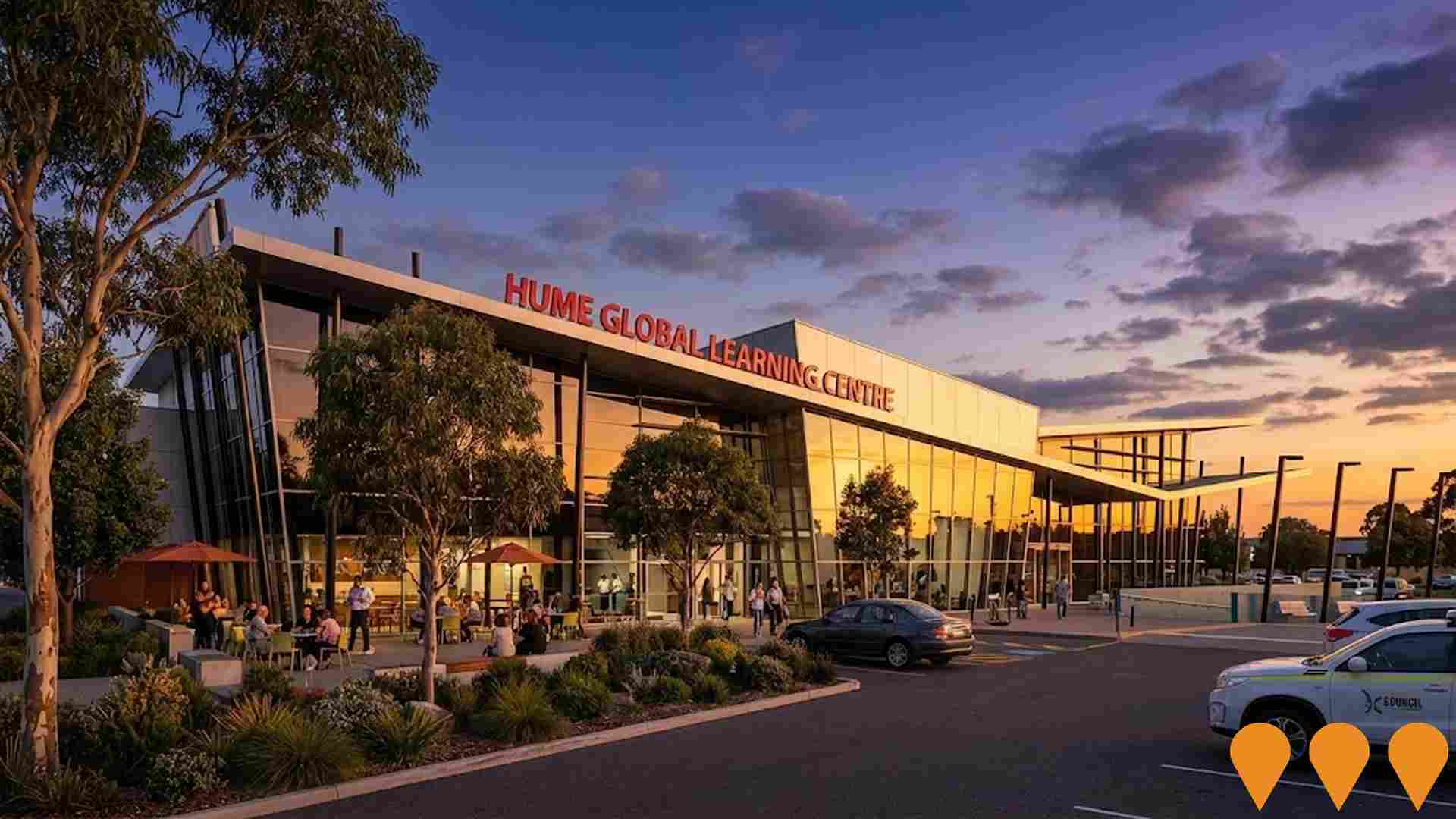
Employment
AreaSearch assessment indicates Broadmeadows faces employment challenges relative to the majority of Australian markets
Broadmeadows has a skilled workforce with strong representation in manufacturing and industrial sectors. The unemployment rate was 15.3% as of June 2025, which is 6.1 percentage points higher than Greater Melbourne's rate of 4.6%.
Employment growth over the past year was estimated at 4.1%. As of June 2025, 5,509 residents were employed. Workforce participation in Broadmeadows was 45.9%, compared to Greater Melbourne's 64.1%. Key industries of employment among residents are health care & social assistance, construction, and transport, postal & warehousing.
The area has a significant specialization in transport, postal & warehousing, with an employment share of 2.0 times the regional level. Conversely, professional & technical services show lower representation at 5.0% compared to the regional average of 10.1%. The worker-to-resident ratio was 0.9 as per the Census, indicating substantial local employment opportunities. In the 12-month period ending June 2025, employment increased by 4.1% while labour force increased by 4.7%, resulting in an unemployment rate rise of 0.5 percentage points. For comparison, Greater Melbourne recorded employment growth of 3.5%, labour force growth of 4.0%, and a similar unemployment increase of 0.5 percentage points. National employment forecasts from Jobs and Skills Australia, issued May 2025, project national employment growth of 6.6% over five years and 13.7% over ten years. Applying these projections to Broadmeadows' employment mix suggests local growth of approximately 6.0% over five years and 12.8% over ten years.
Frequently Asked Questions - Employment
Income
Income metrics place the area in the bottom 10% of locations nationally according to AreaSearch analysis
Broadmeadows' median taxpayer income in financial year 2022 was $37,921. The average income for that year was $45,909. This is below the national average of $54,892 (median) and $73,761 (average), which were reported for Greater Melbourne. Based on a 12.16% increase in Wage Price Index since financial year 2022, estimated median income as of September 2025 would be approximately $42,532. The average income estimate by that date is around $51,492. According to the 2021 Census, incomes in Broadmeadows fall between the 3rd and 11th percentiles nationally for households, families, and individuals. Income distribution data shows that 29.3% of locals (4,474 people) earn between $800 - $1,499 annually, differing from the broader area where the predominant income category is $1,500 - $2,999 at 32.8%. Housing affordability pressures are severe in Broadmeadows, with only 78.5% of income remaining after housing costs, ranking at the 9th percentile nationally.
Frequently Asked Questions - Income
Housing
Broadmeadows displays a diverse mix of dwelling types, with a higher proportion of rental properties than the broader region
In Broadmeadows, as per the latest Census findings, 69.7% of dwellings were houses, with the remaining 30.2% being semi-detached, apartments, or other types. This differs from Melbourne's metropolitan area where 87.6% are houses and 12.4% are other dwellings. Home ownership in Broadmeadows stood at 23.6%, similar to Melbourne metro's rate, with mortgaged dwellings at 26.4% and rented ones at 50.0%. The median monthly mortgage repayment in Broadmeadows was $1,419, lower than Melbourne's average of $1,834. Weekly rent median was $331 compared to Melbourne's $369. Nationally, Broadmeadows' mortgage repayments were significantly lower at $1,419 versus Australia's average of $1,863, and rents were substantially lower at $331 compared to the national figure of $375.
Frequently Asked Questions - Housing
Household Composition
Broadmeadows features high concentrations of group households, with a lower-than-average median household size
Family households account for 69.5% of all households, including 31.6% couples with children, 17.9% couples without children, and 17.4% single parent families. Non-family households constitute the remaining 30.5%, with lone person households at 25.0% and group households comprising 5.6%. The median household size is 2.8 people, which is smaller than the Greater Melbourne average of 3.2.
Frequently Asked Questions - Households
Local Schools & Education
Educational outcomes in Broadmeadows fall within the lower quartile nationally, indicating opportunities for improvement in qualification attainment
The area's university qualification rate is 26.2%, significantly lower than Greater Melbourne's average of 37.0%. Bachelor degrees are the most common at 16.1%, followed by postgraduate qualifications (8.4%) and graduate diplomas (1.7%). Vocational credentials are prevalent, with 27.4% of residents aged 15+ holding such qualifications – advanced diplomas (10.7%) and certificates (16.7%). Educational participation is high at 37.8%, including primary education (11.3%), secondary education (8.8%), and tertiary education (6.4%).
There are 20 schools serving 7,723 students, with typical Australian school conditions (ICSEA: 955) and balanced educational opportunities. The area has 6 primary, 7 secondary, and 7 K-12 schools, functioning as an education hub with 50.6 school places per 100 residents – much higher than the regional average of 17.5, attracting students from nearby communities. Note: for schools showing 'n/a' in enrolments, please refer to their parent campus.
Frequently Asked Questions - Education
Schools Detail
Nearby Services & Amenities
Transport
Transport servicing is high compared to other areas nationally based on assessment of service frequency, route connectivity and accessibility
Broadmeadows has 92 active public transport stops, offering a mix of train and bus services. These stops are served by 31 different routes, collectively facilitating 12,920 weekly passenger trips. The area's transport accessibility is rated good, with residents typically located 243 meters from the nearest stop.
Service frequency averages 1,845 trips per day across all routes, equating to approximately 140 weekly trips per individual stop.
Frequently Asked Questions - Transport
Transport Stops Detail
Health
Broadmeadows's residents are healthier than average in comparison to broader Australia with prevalence of common health conditions quite low among the general population though higher than the nation's average across older, at risk cohorts
Health data shows Broadmeadows residents have relatively positive health outcomes, with a low prevalence of common conditions compared to the general population but higher than the national average among older and at-risk cohorts. Private health cover is very low in Broadmeadows, at approximately 47% (around 7,117 people), compared to 49.1% across Greater Melbourne and the national average of 55.3%. Mental health issues and asthma are the most common conditions, affecting 7.7% and 6.8% of residents respectively, while 73.0% report no medical ailments, compared to 76.3% in Greater Melbourne.
Broadmeadows has a higher proportion of seniors aged 65 and over at 12.3% (1,883 people), compared to 10.8% in Greater Melbourne. Health outcomes among seniors require more attention than the broader population.
Frequently Asked Questions - Health
Cultural Diversity
Broadmeadows is among the most culturally diverse areas in the country based on AreaSearch assessment of a range of language and cultural background related metrics
Broadmeadows has one of the highest cultural diversities in Australia, with 53.9% of its population born overseas and 65.8% speaking a language other than English at home. Islam is the predominant religion in Broadmeadows, accounting for 36.4% of its population, compared to 24.1% across Greater Melbourne. The top three ancestry groups in Broadmeadows are Other (39.2%), Australian (13.9%), and English (11.7%).
Notably, Lebanese ethnicity is overrepresented at 8.6%, compared to the regional average of 4.2%. Samoan and Vietnamese ethnicities also have notable representations at 1.3% each, differing from the regional averages of 1.3% and 0.9% respectively.
Frequently Asked Questions - Diversity
Age
Broadmeadows's young demographic places it in the bottom 15% of areas nationwide
Broadmeadows has a median age of 33, which is lower than Greater Melbourne's figure of 37 and Australia's national average of 38 years. Compared to Greater Melbourne, Broadmeadows has a higher proportion of residents aged 25-34 (19.4%) but fewer residents aged 45-54 (10.0%). Between the 2021 Census and the present day, the population aged 35-44 has increased from 14.5% to 15.9%, while the proportion of residents aged 25-34 has decreased from 20.1% to 19.4%. By 2041, demographic projections indicate significant changes in Broadmeadows' population structure, with the 45-54 age group expected to grow by 91%, adding 1,395 residents to reach a total of 2,924.


